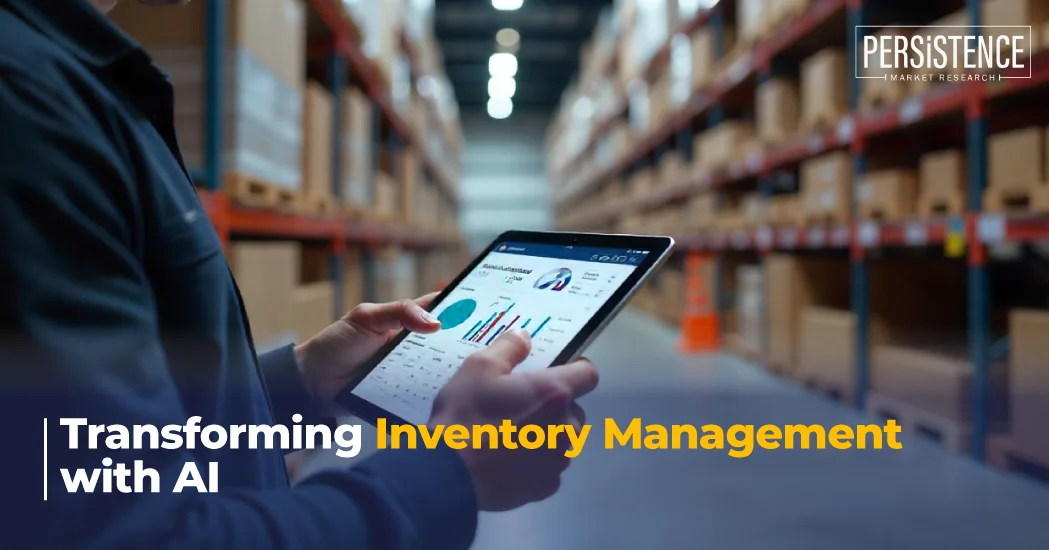- Blog
- Ai Powered Inventory Management For Smarter Operations
AI-Powered Inventory Management for Smarter Operations
Published On : 26 Aug 2025
In the evolving landscape of logistics, supply chain optimization, and e-commerce, AI-powered inventory management has emerged as a transformative tool. Traditional inventory systems often rely on historical data and manual inputs, leading to errors, overstocking, or stockouts. Artificial Intelligence (AI), however, leverages real-time data, predictive analytics, and machine learning to revolutionize how businesses manage stock.

Artificial Intelligence (AI) redefines how businesses handle their inventory. It enhances forecasting accuracy, automates stock replenishment, reduces holding costs, and adapts to demand fluctuations more efficiently than legacy systems.
Key Applications of AI in Inventory Management
1. Predictive Demand Forecasting
AI algorithms analyze massive datasets including sales trends, market conditions, weather patterns, and social signals to anticipate customer demand. This helps businesses avoid excess inventory and reduce the risk of stockouts.
2. Automated Replenishment
AI systems can automate the replenishment process by identifying low-stock items and triggering reorders based on predefined thresholds or predictive analytics, ensuring optimal stock levels are always maintained.
3. Inventory Classification and Optimization
AI tools segment inventory using techniques like ABC analysis, demand variability, and velocity classification to determine stocking priorities and streamline storage strategies.
4. Computer Vision for Shelf and Warehouse Management
Computer vision powered by AI can monitor shelf stock in real-time, detect misplaced products, and guide warehouse robots for more efficient picking and storage.
5. Risk Management and Anomaly Detection
Machine learning can detect unusual inventory activity, helping to reduce fraud, identify shrinkage, and alert managers about operational bottlenecks before they become costly issues.
Real-World Impact and Industry Adoption
- Amazon uses AI and robotics in its fulfillment centers to track inventory in real time, predict buying trends, and optimize restocking schedules.
- Zara applies AI to adjust inventory across stores weekly based on consumer behavior and localized trends, reducing markdowns and maximizing sales.
- Walmart uses computer vision to monitor shelf stock, reducing manual labor and increasing stock accuracy.
How does AI-driven forecasting differ from traditional inventory planning methods?
Traditional inventory forecasting typically relies on historical sales data and fixed assumptions (like seasonal trends or economic cycles). While useful, these methods often fall short when unexpected variables like pandemics, supply chain disruptions, or sudden demand surges occur.
AI-driven forecasting, on the other hand, utilizes machine learning models that ingest not just historical data, but also real-time feeds from multiple sources. Social media sentiment, weather forecasts, global news, customer browsing behavior, and more. These models continuously learn and adapt, allowing businesses to forecast with greater accuracy and agility. As a result, AI eliminates both understocking and overstocking risks, increasing profitability and responsiveness.
What types of businesses can benefit from AI inventory solutions, and how do they scale?
AI inventory solutions are not exclusive to large enterprises. While companies like Amazon, Walmart, and Alibaba are pioneering at scale, small and mid-sized businesses (SMBs) also reap significant benefits. Retailers use AI to predict purchasing trends and manage store-level stock, and manufacturers rely on AI to balance raw material inventories and finished goods. E-commerce platforms apply AI to track warehouse availability and reduce shipping delays while restaurants and grocery chains utilize it for perishable inventory optimization.
With the emergence of cloud-based AI services and low-cost SaaS solutions, companies of all sizes can adopt scalable AI solutions without having to make huge IT investments. Most AI inventory tools are modular in nature, with the initial feature being forecasting or replenishment, and the feature set expands as the business scales.
What are the key challenges businesses face when implementing AI in inventory management?
Despite its promise, adopting AI in inventory management comes with challenges. Some of the most common include:
- Data Quality and Availability- AI models depend heavily on accurate and clean data. Inconsistent or siloed data across systems can reduce the effectiveness of AI predictions.
- Change Management- Teams often resist transitioning from manual or traditional ERP systems to AI-powered tools due to fear of job displacement or workflow disruption.
- Integration Complexity- AI must integrate with existing systems like ERPs, WMS (Warehouse Management Systems), and e-commerce platforms. This integration can be technically complex if legacy systems are involved.
- Cost and ROI Concerns- While AI promises long-term savings, initial costs related to implementation, training, and system upgrades can deter SMBs.
Overcoming these hurdles requires leadership commitment, employee training, strategic partnerships with AI vendors, and a phased implementation approach. Once deployed, the long-term gains in operational efficiency and customer satisfaction significantly outweigh the early challenges.
The Future of Inventory Management is Intelligent
AI is rapidly becoming the backbone of modern inventory management. As supply chains become more complex and consumer expectations evolve, traditional systems can no longer keep up. By embedding AI into inventory workflows, businesses unlock powerful capabilities to stay agile, cost-effective, and resilient.
Industry Report

Artificial Intelligence As A Service Market
181 Pages |24 Jul 2024
Format: PDF, Excel, PPT*
Request Report Sample
Your privacy is important to us; your data is secure
Contact Us
Latest Reports
-
Piezoresistive Pressure Sensor Market by Sensor Type (Absolute, Gauge, Differential, Sealed), Pressure Range (Low Pressure (<10 kPa), Medium Pressure (10 kPa – 1000 kPa), High Pressure (>1000 kPa)), End-Use Industry (Automotive & Transportation, Industrial Manufacturing, Healthcare, Aerospace & Defense, Electronics) and Regional Analysis for 2026-2033
-
Aquarium Accessories Market by Product Type (Filtration Items, Lights & Hoods, Temperature Control Systems, Others), End-User (Residential, Commercial), Distribution Channel (Online, Offline), and Regional Analysis for 2026-2033
-
Oxygen Therapy Market by Product Type (Compressed Oxygen, Concentrated Oxygen, Liquid Oxygen), Disease (Respiratory Disorder, Cardiovascular Disease, Sleep Apnea, Pneumonia), End-User (Hospitals, Home Healthcare, Clinics), and Regional Analysis for 2026-2033
-
Air Curtains Market by Product Type (Non‑Recirculating, Recirculating, Heated, Others), Airflow Capacity (Up to 500 m³/h, 500–1000 m³/h, 1000–1500 m³/h, Above 1500 m³/h), Application (Commercial, Industrial, Residential, Others), and Regional Analysis for 2026–2033
-
Personalized Stationery Market by Product type (Storage & Filling Products, Paper-Based Products, Drawing & Writing Instruments, Accessories, Bags, Others), Application (Educational Institutes, Corporate Offices, Personal Use, Hospitals, Others), and Regional Analysis for 2026–2033
